#radical history
Text

#hiv/aids#aids#aids crisis#aidsday2022#aids activism#aids history#hiv#queer history#respectability politics#lgbtq history#radical inclusivity#radical acceptance#radical red#radical feminism#radical self love#radical feminists please touch#radical queer#radical history#radical eco thug spared jail after pouring poo on memorial to captain tom moore#rights
766 notes
·
View notes
Text

Damn why was anyone even upset about that, working three days a week & using the rest for my seditious machinations sounds good to me
#*kicks dirt* yet another thing capitalism has taken from us#18th century#radical history#cb cone#biography#undescribed#jory.txt
234 notes
·
View notes
Text
My first introduction to queer culture.
One of my earliest radicalizing memories was finding a collection of queer essays at the local library. I was fourteen and didn't really know anything about queer culture; this was a period in time where you would be called a fag for having the wrong type of schoolbag or for liking certain shows or for any deviation from the monoculture. One of them described a man and his group of friends going through the process of providing hospice to, and then compassionately euthanizing his HIV+ lover during the AIDS crisis. It was visceral, the description of watching someone's life fade away. The rage and grief I felt was new; I literally trembled and cried. I had no guidestone to navigate these emotions as I had never encountered the bare brutality of the state, of bourgeois indifference.
Now, as an adult who is still reconciling my own nonbinary identity and still exploring my own connection to the queer community what I saw in that essay looms as large as ever. I never found that essay again, but I still think about it, and I still feel the same rage and grief that I felt in the library sixteen years ago.
#anarchism#lgbt history#radical history#nonbinary#radicalization#queer history#anarchocommunism#homophobia#aids activism#hiv/aids
28 notes
·
View notes
Text
Lillian Harman, anarchist feminist

Harman, an anarchist feminist, was born in Missouri in 1869. She campaigned in support of sexual freedom and for marriage outside the bounds of state and church control. Harman criticised the ways the state used marriage to enforce women's legal subservience to their husbands. She entered a "free marriage" (getting married without any legal documentation and keeping her surname). For this, Harman was sent to prison for contravening the 1867 Kansas Marriage Act. After this, she continued to push for sexual freedom and to publish anarchist feminist works.
2 notes
·
View notes
Text
The New Model Army Defiant: ‘What were the lords of England but William the Conqueror’s colonels or the barons but his majors?’
Cromwell and Fairfax Choose Sides

The Farmer Who Ruled England by Ron Embleton. Source: Look And Learn magazine #51 (5th January 1963).
BY THE SPRING of 1647, the split between the Presbyterian faction that dominated Parliament and the New Model Army had widened into a chasm. The Army was fundamentally opposed to Parliament’s intention to disband most of its units, save for an expeditionary force to be sent to Ireland, with its months of wage arrears unpaid and with no indemnity granted to soldiers for actions taken during the war. The Army was also suspicious at what it perceived as the marginalisation by the Presbyterians of its popular leading commanders, Sir Thomas Fairfax and Oliver Cromwell, and nervous at the apparent negotiations between Parliament and the King which they believed could see Charles re-established with full royal authority on his throne, with potentially dire consequences for those commoners who had raised arms against him. The Independents were therefore assuming more and more influence amongst the middle ranking officers and the ordinary soldiery, leading to an increased militancy, not just against a Parliamentary faction that the men believed sought to swindle them out of their due, but also against an aristocratic ruling order they saw being reimposed and which many had hoped the war had rid them of. This led to the soldiers to begin to elect so-called “Agitators” to represent their interests to Parliament. The Agitators were more akin to shop stewards than the term’s modern connotation of persuasive political radicals, and indeed one of the first actions of the new militancy was for the Army to go on strike in April 1647.
The strike manifested itself as a refusal to serve in Ireland without the soldiers’ back pay being met, legal indemnities for their actions during the fighting being issued and, significantly an insistence that the Irish expedition be led by Cromwell and Fairfax. The two commanders were in an invidious position: Fairfax remained Parliament’s commander-in-chief and Cromwell was a sitting MP. Both men privately sympathised with the strikers. Cromwell attempted to broker an agreement between Parliament and the Agitators, but the situation spiralled out of control when on 25th May, Parliament announced the disbanding of the New Model Army with the exception of the force to travel to Ireland. The Army’s response was to muster in Newmarket, a show of strength that took the Presbyterians aback who, apart from the Trained Bands in London, had no military forces of their own to deploy against what was beginning to look like an organised mutiny. The Agitators then issued their own demand that the eleven MPs who had signed the disbandment order should themselves be removed from the Commons.
This development led to Cromwell’s moment of truth. Instinctively, he was a social conservative, very wary of the radical elements of the Army, but equally he owed a debt of blood to the soldiery whom he had commanded, fought with and led to extraordinary victories. His ultimate decision was made easier by his enemies in Parliament who believed him to be, at best, tolerant of the radical Independents in the Army and at worst, their cynical manipulator. As the Presbyterians’ negotiations with Charles threatened to being Scottish troops back into England to take on the New Model Army, Cromwell resigned his Parliamentary seat and cast his lot in with the military. What followed was the most audacious move in an extraordinary career that would one day make Cromwell king of England in all but name. Following a shadowy and never proven meeting between Cromwell and his immediate officers over lunch at an inn in Drury Lane, on 2nd June, a relatively junior Agitator named George Joyce, a second lieutenant, or “Cornet” in the New Model Army cavalry, led a troop of 500 horse to Holdenby House.
Joyce was met with suspicion by the military force guarding the King at Holdenby and they refused his demands to release Charles into his custody. The enterprising Joyce then forced his way into the startled King’s bed chamber and insisted Charles accompany him to London. The King, sensing something was afoot, and having obtained assurances from Joyce he would not be harmed or compelled to do anything against his conscience, agreed. The Parliamentary guard, unwilling to take on a numerous force of New Model troopers stood down and Joyce took charge of the King. An intrigued, and quite possibly amused, Charles enquired by what authority Joyce was taking him into custody. Joyce, clearly discomfited by Charles’ persistence, obfuscated, and replied transferring the King to the care of the Army, was necessary to secure peace in the Kingdoms. When Charles continued, asking Joyce “by what commission you have” to take his action, the exasperated officer turned and indicated his mounted soldiers. “By this commission, sir,” he replied. The King acknowledged the new reality under which his realm was now ruled. “It is as fair a commission and as well written as I have seen a commission written in my life.” he allegedly remarked. On 7th June, Joyce handed Charles into the charge of Fairfax and Cromwell. The rebellious New Model Army not only now had the unequivocal support of its much loved wartime commanders, it had the King as well.
Cromwell, Fairfax and the King all now proceeded to Newmarket where the Army remained under arms. Cromwell encouraged the formation of an Army Council to, in effect, administer the rebellious force, independent of any form of Parliamentary control. Parliament quickly realised the seriousness of the situation it was faced with: failure to compromise could lead to its overthrow by the Army. They quickly conceded the Army Council’s demands : the disbandment order was rescinded, the hated eleven signatories resigned their seats and pay arrears were agreed to be met in full. Cromwell now found himself in the position of being able to seek a settlement to bring the civil war to a conclusion but mandated by neither King nor Parliament to do so. There followed a period of intense negotiation with Charles under which Cromwell and Henry Ireton were prepared to reject the Newcastle Propositions and the Solemn League and Covenant, restore Royal privilege and crush the radicals in the army in return for religious toleration, biennial Parliaments and an amnesty for the those who had fought for Parliament. The only significant concession the Independents asked of Charles was his agreement to end episcopacy. An unlikely partial Royalist victory was within Charles’ grasp if he could bring himself to agree to the generous terms, known as the Heads of Proposals, on offer.
At the same time as, crab like, a settlement of England’s constitutional crisis seemed at last possible, political opinion was hardening not only within the ranks of the New Model Army, but also within a series of disparate low church groups for whom “toleration” was simply the start. They were spear headed by a remarkable group of radical egalitarians known as “The Levellers”. These proto socialists rejected monarchical and aristocratic privilege; sought the break up of aristocratic-owned estates and their redistribution to yeoman farmers; wished Parliament to be the depository of popular as opposed to kingly sovereignty, and promoted sexual equality and the rights of women. The Levellers also believed in the intrinsic correctness of social equality under God, and advocated for commerce and small business at the expense of inherited wealth and land ownership. It is possible that the Levellers could have ultimately been dismissed as one of several short lived seventeenth century utopian and extreme religious groups such the Diggers, the Ranters, the Quakers and the Proclaimers, but, crucially, they possessed intellectual heft in the shape of their leaders, William Welwyn, Richard Overton and “Honest” John Lilburne, and a power base within the Army which could not be ignored. In the autumn of 1647, the Levellers were to be one of the most influential elements in a fascinating episode in England’s radical history: the so-callled Putney Debates.
#english civil war#british history#parliament#oliver cromwell#thomas fairfax#Charles I#the levellers#radical history
5 notes
·
View notes
Text

I created, researched and wrote a visual and written timeline of social and environmental movements in Bristol between 1970 to 2022, for display, as part of the MShed, Bristol, Think Global: Act Bristol exhibition. It encourages participation from visitors to contribute their citizen histories, in which I document for the duration of the exhibition. I gave consultant support for representation of diverse voices and the geo political story in relation to climate justice for this exhibition.
#Climate Justice#Think Global Act Bristol#Bristol Activism#Social History#Climate Activism History#Environmentalism#Social Justice#BLM#ABLM#Black Lives Matter#Citizen Historians#Radical History#Biodiversity#Conservation#Permaculture#Bristol Permaculture#Community Gardens#Stop Nuclear Waste#Eco Housing#Cycle Networks
5 notes
·
View notes
Text

Greenham Common Peace Banner
Seen at Radical Landscapes
William Morris Gallery
Walthamstow
London
#found#art#Greenham common#peace#peace activism#banner art#protest#protest art#1980s#british history#radical history#feminism#women’s art#protest banners#women’s history
1 note
·
View note
Note
Thank you for defending Nazis. They're just little guys. Just misunderstood, with genuine grievances. I noticed you accidentally forgot to defend child rapists. Dumb commies like you are all the same 🙄
Piss on the poor! Also I'm not a commie and never claimed to be one.
#anyway 'Germany was hurting after WWI which allowed Hitler to rise to power'#and 'antisemitism was escalating at an alarming rate which created a very dangerous situation for Europe's Jewish population'#and 'by leaning into the antisemitism that already existed in Germany at the time Hitler was able to rapidly radicalize Germany's population#are all just like. history. ever read a world history textbook or did you sleep all through your history classes?#case in point if you're not able to identify why or how things got that bad then you're doomed to follow the same path
5K notes
·
View notes
Text
My name is Lew Wentz.
I am a 68 year old gay criminal defense lawyer. I have been keeping journals for 46 years. I am writing a book based on the journals.
I came out as a gay man in 1984. I was married to a woman then. I left the marriage after telling her I was gay.
My younger sister, Zoe, who I was very close to, died rather suddenly of pancreatic cancer earlier this year. She gave me permission to blog the last two weeks of her life. Those blogs run from May 1 to May 14, 2023.
I journaled my journey through the turbulent 1980's and 1990's. During that time, I was pretty vocal about being gay. I volunteered to help people with aids through their illness and death. And, I believe because of this, I was fired from my job as a deputy Public Defender in Modesto California. I also documented the 12 year relationship I had with my partner, Jim, who died in 2009.
I wrote pretty much daily about these events and many others. I never intended for the entries to be made public. But, I now think they should be, as they weave what I believe to be our common story of what it's been like to be out, human and gay in the past four decades.
And, as I journaled, I developed ideas and ways to journal and wrote about them in the journals. I discuss the impact journaling has had on me. And, the amazing revelation reviewing journal entries for the blog and book of just how incredible our lives have been. Memory fades. The journal details do not.
My hope is that , after reading the blogs, and maybe some day the book, you too will become addicted to journaling. Your life on paper will amaze you down the line.
My blog turned one year old on February 5, 2024.
#journaling#gay man#criminal defense attorney#gay history#journaling techniques#Remember the Plunge Blog turned 0ne Year old February 5#writing#radical gay elder#aids#volunteer support for people with aids through illness and death in the 80's and 90's.#gym and diet enthusiast#being fired from a job I believe because I was out#gay and vocal#Being disinherited for the same reason.#death of a sister#working through grief and mourning
4K notes
·
View notes
Text
My university history course literature includes a book on women's history. Entirely written by two men. It has a whole chapter on "transgender history". The first person they bring up is Ulrika Eleonora Stålhammar, a swedish woman from the late 17th- early 18th century who started dressing as a man and took a male name to marry her wife Maria Lönman. After ten years or so she started presenting herself as a woman again. These men are SO confused as to why. Why would she ever stop living as a man? And if she was a lesbian, why bother living as a man in the first place, considering female homosexuality was never formally outlawed in Sweden? The entire time they refer to her as a trans man.
Why oh why could a woman in the 18th century possibly be uncomfortable living as a woman? Why oh why would a woman in the 18th century not just live openly as a lesbian? What reason could she POSSIBLY have had to pretend to be a man? Nah, no critical thinking here. She was obviously a man all along, that's the only reasonable explanation. This is what they're making university students read for history.
Stop discrediting these brave women. I know you think you're being inclusive and progressive by imagining they were Actually trans, but you're not. All you're doing is perpetuating the myth that all women are and were submissive and content in their role as second class citizens (if even that). If every female person who was gender nonconforming in the Olden Times was actually a man all along then the actual women didn't have it that bad, right? They never rebelled against their societal roles before the women's voting right movements, right??
1K notes
·
View notes
Text
women artists that you should know about!!
-Judith Leyster (Dutch, 1609-1660)
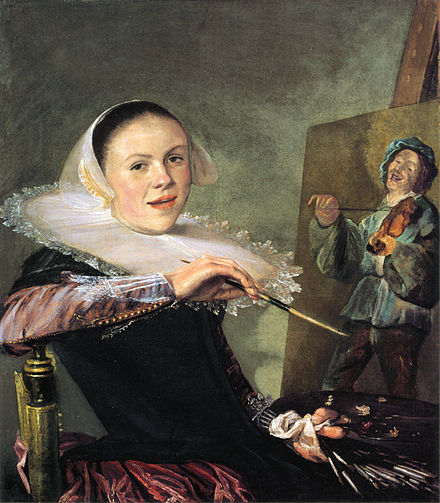
During her life her works were highly recognized, but she got forgotten after her death and rediscovered in the 19th century. In her paintings could be identified the acronym "JL", asually followed by a star, she was the first woman to be inserted in the Guild of St. Luke, the guild Haarlem's artists.
-Artemisia Gentileschi (Italian, 1593-1656)
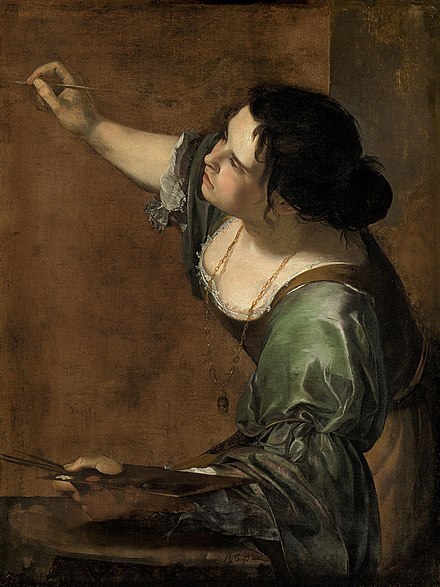
"... Si è talmente appraticata che posso osar de dire che hoggi non ci sia pare a lei, havendo fatto opere che forse i principali maestri di questa professione non arrivano al suo sapere". This is how the father Orazio talked about his nineteen year old daughter to the Medici's court in Florence.
In 1611, Artemisia got raped, and she had to Undergo a humiliating trial, just to marry so that she could "Restore one's reputation" , according to the morality of the time. Only after a few years Artemisia managed to regain her value, in Florence, in Rome, in Naples and even in England, her oldest surviving work is "Susanna and the elders".
-Elisabeth Louise Vigèe Le Brun (French, 1755-1842)
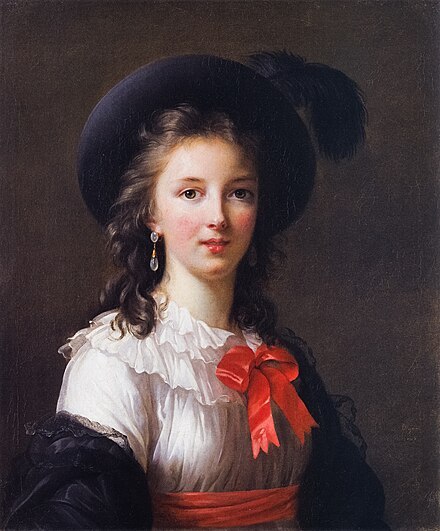
She was a potrait artists who created herself a name during the Ancien Règime, serving as the potrait painting of the Queen of France Marie Antoinette, she painted 600 portraits and 200 landscapes in the course of her life.
-Augusta Savage (Afro-American, 1892-1962)
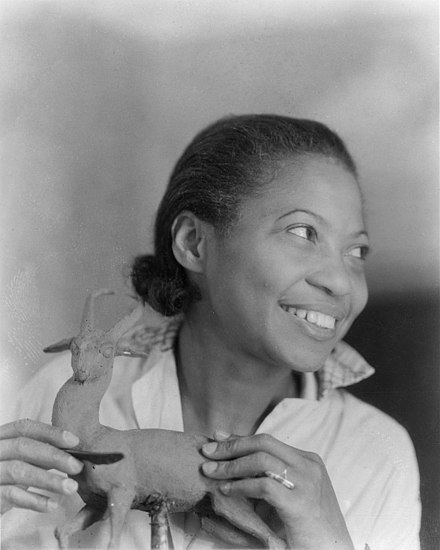
Augusta started making figures when she was a child, which most of them were small animals made out of red clay of her hometown, she kept model claying, and during 1919, at the Palm Beach County Fair, she won $25 prize and ribbon for most original exhibit. After completing her studies, Savage worked in Manhattan steam laundries to support her family along with herself. After a violent stalking made by Joe Gould that lasted for two decades, the stalker died in 1957 after getting lobotomized. In 2004, a public high school, Augusta Fells Savage Institute of Visual Arts, in Baltimore, opened.
-Marie Ellenrieder (German,1791-1863)
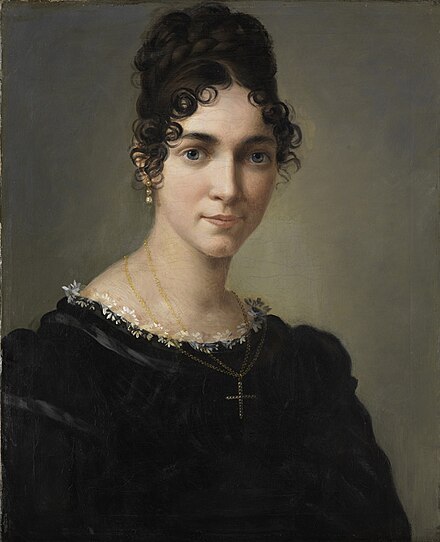
She was known for her portraits and religious paintings. During a two years long stay in Rome, she met some Nazarenes (group of early 19th century German romantic painters who wanted to revive spirituality in art),after becoming a student of Friedrich Overbeck and after being heavily influenced by a friend, she began painting religious image, getting heavily inspired by the Italian renaissance, more specifically by the artist Raphael. In 1829, she became a court painter to Grand Duchess Sophie of Baden.
-Berthe Marie Pauline Morisot (French,1841-1893)
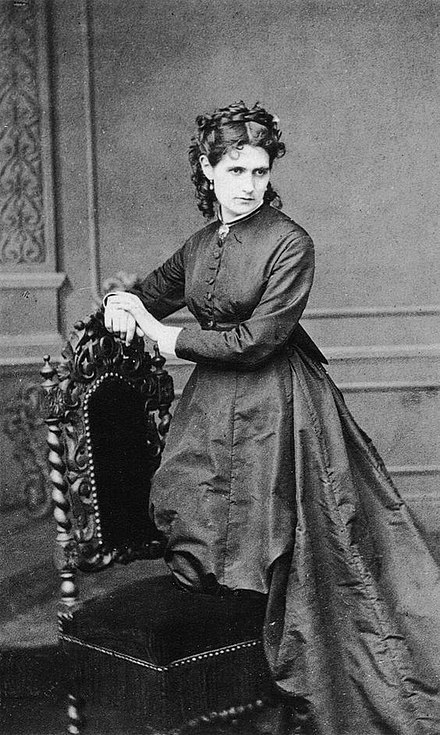
Morisot studied at the Louvre, where she met Edouard Manet, which became her friend and professor. During 1874 she participated at her first Impressionist exhibition, and in 1892 sets up her own solo exhibition.
-Edmonia Lewis or also called "wildfire" (mixed African-American and Native American 1844-1907)
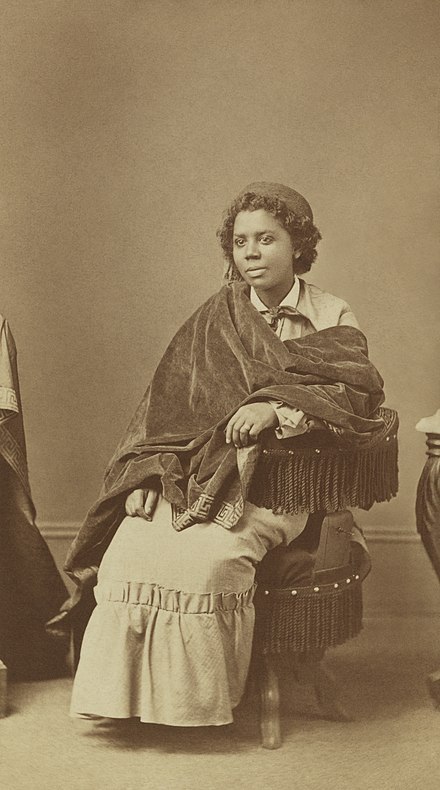
Edmonia was born in Upstate New York but she worked for most of her career in Rome, Italy. She was the first ever African American and Native American sculptor to achieve national and international fame, she began to gain prominence in the USA during the Civil Ware. She was the first black woman artist who has participated and has been recognized to any extent by the American artistic mainstream. She Also in on Molefi Kete Asante's list of 100 Greatest African Americans.
-Marie Gulliemine Benoist (French, 1768-1826)
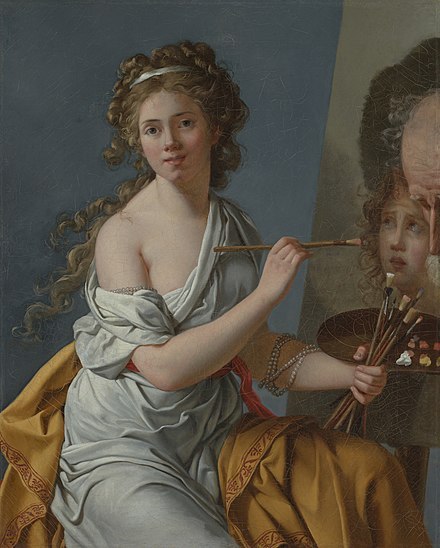
Daughter of a civil servant, Marie was A pupil of Jaques-Louis David, whose she shared the revolutionary ideas with, painting innovative works that have caused whose revolutionary ideals he shared, painting innovative works that caused discussion. She opened a school for young girl artists, but the marriage with the banker Benoist and the political career Of the husband had slowly had effect on her artistic career, forcing her to stop painting. Her most famous work is Potrait of Madeline, which six years before slavery was abolished, so that painting became a simbol for women's emancipation and black people's rights.
-Lavinia Fontana (Italian, 1552-1614)

She is remembered for being the first woman artist to paint an altarpiece and for painting the first female nude by a woman (Minerva in the act of dressing), commissioned by Scipione Borghese.
-Elisabetta Sirani. (Italian, 1698-1665)
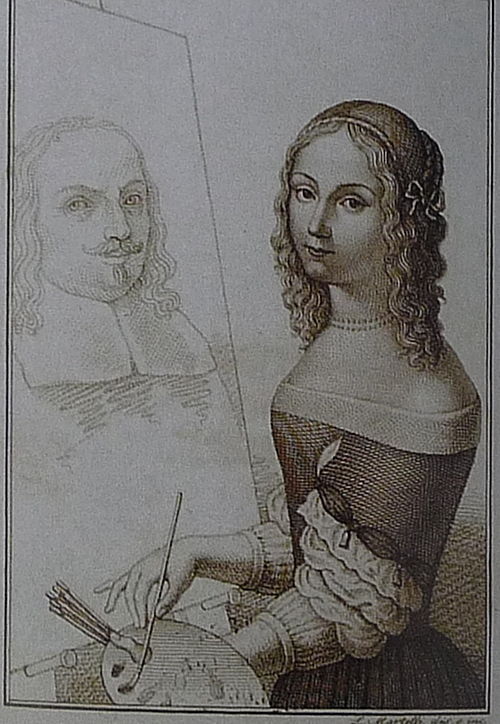
Her admirable artistic skills, that would vary from painting, drawing and engraving, permitted her, in 1660, to enter in the National Academy of S. Luca, making her work as s professor. After two years she replaced her father in his work of his Artistic workshop, turning it into an art schools for girls, becoming the first woman in Europe to have a girls' school of painting, like Artemisia Gentileschi, she represent female characters as strong and proud, mainly drawn from Greek and Roman stories. (ex. Timoclea Kills The Captain of Alexander the Great, 1659).
#judith leyster#artemisia gentileschi#Elisabeth Louise Vigèe Le Brun#Augusta Savage#Marie Ellenrieder#berthe morisot#Edmonia Lewis#Marie Gulliemine Benoist#Lavinia Fontana#Elisabetta Sirani#women artists#renaissance#baroque#art#women in art#artist women#feminism#women history#radical feminists do touch#radical feminists please interact#history#terfblr#terfsafe#cultura#culture
916 notes
·
View notes
Text


39 notes
·
View notes
Text

from quendergeer on x.com
The USA did nothing to help the Warsaw Ghetto. As they ignored the Warsaw Ghetto, the CIA were recruiting Nazi spies to gather intelligence on the Soviets.
The United States did not get involved in the genocide of Jews in Europe until their power was threatened. So ask yourself now, is the United States funded State of Israel is truly about protecting Jewish people?
#jewish history#jewish radical activism#jewish antizionists#poland#united states#historical documents#sources
462 notes
·
View notes
Text

☆∻∹⋰⋰
#dark aesthetic#retrowave#glow aesthetic#gothic aesthetic#vaporwave#neon aesthetic#retrofuture#synthwave#aesthetic#neon#dark feminine energy#divine feminine#feminine rage#feminism#radical feminism#witchcraft#witchblr#witchcore#witches#wicca#wiccan#female#women#woman#womens rights#painting#artwork#art history#art#vintage aesthetic
257 notes
·
View notes
Text
You can't even say that men wrote laws that oppressed women throughout history without someone trying to make it up to be transphobic
You're called a terf for addressing the patriarchy
#Kinda sus that trans women identify with oppressive males throughout history#radical feminist safe#radblr#radical feminism#Transgender
396 notes
·
View notes
Text
"Prostitution was illegal in most places, but the fines levied on prostitutes provided a steady income for towns (as they still do). Many approved of brothels to curb male rampages. Between 1436 and 1486, for example, gangs of young men, mostly the sons or servants of residents, preyed on Dijon women. They broke into the houses of spinsters, widows, or wives whose husbands were away to rape them, sometimes dragging the women through the streets to an empty house where they kept them for days, repeatedly raping them. City officials solved this problem by setting up municipal brothels. They filled them with the women who had been assaulted in the gang rape."
-p.43 of 'From Eve to Dawn, A History of Women in the World, Volume II: the Masculine Mystique' (French, Marilyn)
610 notes
·
View notes